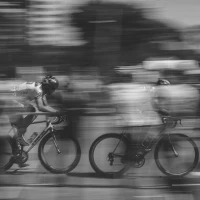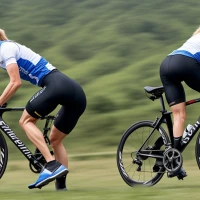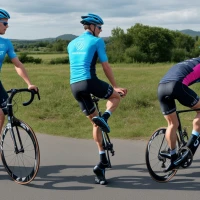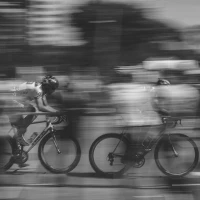Cycling is more than just a leisurely activity or an eco-friendly mode of transportation; it’s a full-scale workout that engages a comprehensive range of muscles to propel you forward. From passionate enthusiasts to competitive cyclists, understanding the key muscles worked during cycling is essential for enhancing performance, ensuring an effective workout, and reducing the risk of injury. In this expansive exploration of pedal power, we will delve into the various muscle groups that are energized by cycling, offering valuable insights for anyone looking to improve their cycling prowess or simply seeking a deeper understanding of this dynamic exercise.
The Primary Muscles Powered by Pedal Action
Cycling is a dynamic activity that involves multiple muscle groups working in harmony to create the motion necessary for propelling the bike. The beauty of cycling lies in its ability to offer a balanced workout that not only focuses on lower body strength but also engages the core and even the upper body to some extent. To enhance your cycling performance and gain a deeper appreciation for the muscle dynamics involved, it is crucial to identify these primary muscle groups.
The Powerhouse: Quadriceps
The quadriceps or quads are the main driving force when it comes to cycling power. Located at the front of the thigh, this muscle group includes four muscles:
- Rectus femoris
- Vastus lateralis
- Vastus medialis
- Vastus intermedius
Each downstroke on the pedal activates your quads, propelling you forward with significant force. Proper conditioning of the quadriceps can lead to noticeable improvements in cycling performance.
The Push and Pull: Hamstrings and Calves
Positioned at the back of the thigh, the hamstrings, consisting of the biceps femoris, semitendinosus, and semimembranosus muscles, come into action during the upstroke part of the pedal cycle. They are crucial for pulling the pedal up and complementing the work of the quadriceps.
Directly below the hamstrings, the calf muscles, which include the gastrocnemius and soleus, play a pivotal role. These muscles help in the pushing down movement, which is essential for a powerful pedal stroke and contribute to the cyclist’s ability to sprint and climb.
Core Stability: The Role of the Abdominals
A stable and strong core is indispensable for cyclists. The abdominal muscles, particularly the rectus abdominis, obliques, and transversus abdominis, aid in maintaining balance and ensuring power transfer from the lower body to the bike. A solid core is critical for sustaining long distances and handling the bike during challenging terrains.
Upper Body Engagement: Shoulders and Arms
While cycling principally works the lower body, the shoulder muscles and arm muscles like the deltoids and triceps can still get a mild workout, especially during intense rides or when supporting the body on the handlebars for extended periods. This engagement is crucial for an all-around toned physique and adds to the collaborative body effort while cycling.
Maximizing Cycling Muscle Engagement
Cycling effectiveness can be significantly enhanced by paying attention to the muscle groups engaged during the ride and optimizing their involvement. Let’s explore how to maximize the contribution of each muscle group for a well-rounded cycling session.
Tailoring Your Training for Lower Body Strength
Building the strength of the quadriceps, hamstrings, and calf muscles can greatly improve your cycling capabilities. Incorporate targeted exercises such as squats, lunges, deadlifts, and calf raises into your training routine to augment pedal power and endurance.
Core Conditioning for Cyclists
Strong core muscles are invaluable for cyclists. Enhance your core stability and strength through exercises like planks, Russian twists, and leg raises. These exercises can transform your cycling stance and prevent the excessive load on your lower back, reducing the potential for injuries.
Overlooked Upper Body Conditioning
Although it’s not the primary focus, incorporating upper body workouts like shoulder presses, arm curls, and push-ups will contribute to improved handlebar control and comfort during prolonged rides.
Technical Tweaks for Targeted Muscle Activation
Beyond just exercise routines, certain technical adjustments can also impact the muscles used in cycling. Let’s get into some specific tweaks you can apply to your cycling technique for better muscle recruitment.
Saddle Positioning
Proper saddle height and positioning greatly influence the extent of muscle engagement. A saddle set too low might underutilize the quadriceps and hamstrings, while one set too high may lead to overextension and injury risks. Fine-tune your saddle position to ensure optimal muscle activation and joint motion.
Pedal Stroke Efficiency
Developing a smooth and efficient pedal stroke will help activate the correct muscle groups throughout the cycling motion. Practice maintaining consistent pressure across the entire pedal stroke by envisioning it as a circular motion rather than just an up and down movement.
Cycling Cadence
Maintaining an appropriate cadence—typically measured in revolutions per minute (RPM)—can help prevent muscle fatigue and utilize the muscles more effectively. An optimal cadence usually ranges from 80 to 100 RPM for most cyclists, balancing energy expenditure and muscle activation.
Understanding the Biomechanics of Cycling
Delving deeper into the biomechanics of cycling reveals intricate details on how the muscles work together. When we understand the mechanics, we can fine-tune our cycling methods to engage muscles properly, minimize injury risk, and improve cycling efficiency.
The Science of the Pedal Stroke
Breaking down the pedal stroke into distinct phases shines a light on which muscles are active and when. The downstroke primarily utilizes the quads, while the upstroke engages the hamstrings and calf muscles. By enhancing the fluidity between these phases, cyclists can achieve a more effective and energy-efficient pedal stroke.
The Role of Joint Angles
Joint angles in the hips, knees, and ankles determine the muscle activation patterns during cycling. Adjusting your bike fit to support optimal joint alignment can enhance muscle engagement and prevent strain, leading to a comfortable and powerful ride.
Force Dynamics and Gear Selection
Selecting appropriate gears in response to terrain and riding conditions affects the force exerted by the muscles. Lower gears minimize strain on the muscles, suitable for climbs and endurance rides, while higher gears challenge the muscles, ideal for sprints and developing power.
Cycling Nutrition and Muscle Function
The relationship between cycling, muscle activity, and nutrition is a crucial factor that is often overlooked. Proper nutrition can support muscle function, aid in recovery, and enhance overall cycling performance.
Macronutrients for Muscle Energy
The right balance of proteins, fats, and carbohydrates can govern your muscles’ energy levels during a ride. Carbohydrates are particularly important for providing quick energy, while proteins are essential for muscle repair and recovery post-ride.
Hydration and Electrolyte Balance
Staying hydrated and maintaining electrolyte balance is vital for muscle function and preventing cramps during cycling. Essential electrolytes such as sodium, potassium, and magnesium must be replenished, especially during long rides or in hot conditions.
Recovery Nutrition Strategies
Post-cycling nutrition focuses on replenishing energy stores and assisting with muscle repair. Consuming high-quality protein along with some carbohydrates within 45 minutes after a ride can significantly enhance the muscle recovery process.
Preventing Common Cycling-Related Muscle Injuries
While cycling is generally a low-impact exercise, it’s not immune to causing muscle injuries. Awareness and preventive measures can help you steer clear of common setbacks.
Overuse and Fatigue
Overuse injuries can occur when muscles are subjected to repetitive strain without adequate recovery. Implementing proper rest, cross-training, and listening to your body’s signals can mitigate the risk of overuse injuries.
Stretching and Flexibility
Regular stretching and maintaining flexibility are critical for preventing muscle tightness and imbalances. Incorporating dynamic stretching pre-ride and static stretching post-ride can contribute to muscle elasticity and injury prevention.
Strengthening Weak Links
Identifying and strengthening weak muscle groups can lead to a more balanced muscle engagement throughout the cycling activity. Especially focus on the muscles that are comparatively less involved in cycling, such as the glutes and upper body muscles, to ensure comprehensive strength and stability.
Conclusion: The Symbiosis of Cycling and Muscle Work
Cycling isn’t just about cardiovascular endurance; the interplay between the muscles and cycling mechanics forms the crux of an efficient and powerful ride. From the mighty quads to the supportive core, and even the often-overlooked shoulders and arms, every muscle contributes to the perfect harmony of pedal power.
By understanding and focusing on the key muscles energized by cycling, you can tailor your training, bike fitting, and nutrition to unlock the full potential of your pedal power. Whether you’re cycling for fitness, fun, or competition, the knowledge of muscle dynamics and how to optimize them can propel you to greater heights, making each ride a testament to the complexity and beauty of cycling.
Incorporate these insights and tips into your cycling routine and watch how your connection with the bike deepens, your cycling experience enhances, and your body becomes a more powerful, well-oiled machine—ready to take on any road, trail, or challenge that comes its way.










